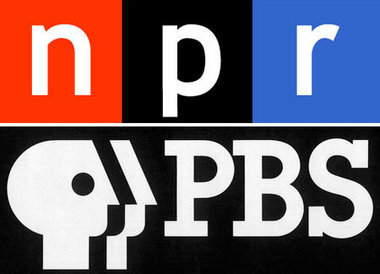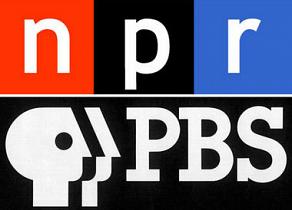Fukushima: NPR feeds Americans with Dis-Info
Recently, National Public Radio (NPR) broadcast a
Sunday was the first anniversary of the March 11, 2011 disaster at Fukushima Daiichi nuclear power plant. For months, utility and government officials held back the truth, but finally admitted that three meltdowns had occurred. Those truths—potentially poisonous to industry plans to build more nuclear plants, — may not enjoy the sunlight for long. Propagandistic op-eds and reports in U.S. news media are attempting to sweep Fukushima’s history under the rug and, sadly, NPR is one of those wielding a broom.
The following claims were presented in NPR’s March 9 report by science reporter Richard Harris.
(1) Health risks are “too small to measure”
[H]ealth effects from radiation turn out to be minor compared with the other issues the people of Fukushima prefecture now face. {snip} We all watched frightening TV images, and clouds of radioactive steam and gas did erupt from the plant. That material did sometimes move over the countryside and into populated areas, so it looked like a horrible disaster. But, in the case of radiation, the dose matters. It’s true, there is no bright line that separates a safe dose of radiation from a dangerous dose, but at some point, a dose is so small that any potential health risk is simply too small to measure.
(Richard Harris, NPR, March 9)
Harris does not identify the source of that conclusion, but it’s a long-time favorite of the industry that promoted the fantasy of “too cheap to meter.” (The bill for Fukushima is estimated at $77 billion and counting.) Listeners are kept blissfully ignorant of dissenting views, including those of the National Academies of Science. However, it’s well known that cancers due to radiation exposure may take decades to develop. Equating a low rate of illness in the first year with a negligible health risk is decidedly premature.
(2) “Quick actions” were taken by Japanese officials”
Harris quotes John Boice, “a cancer epidemiologist at Vanderbilt University,” in assessing the Japanese government’s actions to protect the public from radiation, including measures like evacuation.
One big cloud did blow inland, up toward the northwest. But most of the 170,000 residents in the area were quickly evacuated. Boice says that helped limit dangerous doses. So did other quick actions by the Japanese government.
A “quick” evacuation is one where authorities get the public out of the area as soon as a situation arises that might result in a radioactive release. Japanese authorities instead delayed evacuation until May 15 for residents of the area around Itate, where the cumulative radiation (the estimated first year dose) was 20 millisieverts (2000 millirem) or higher. Japanese officials also failed miserably in implementing another protection action, the distribution of potassium iodide pills.
(3) “Release of “any” food with excessive radiation was “prohibited”
They prohibited the release of any food that had had increased levels of radiation in them,” [Boice] says.
In fact, the Japanese government failed to keep radiation-contaminated food out of the marketplace. Bloomberg Business News reported that officials failed to ban cattle shipments from Fukushima until July 19–after some beef from the area had been shipped to shipped to supermarkets. At that time, the government reported finding beef with “as much 2,300 becquerels of cesium a kilogram,” well over the government’s limit of 500 becquerels per kilogram.
Rice contaminated with cesium also made it into the marketplace, and inspectors in Singapore detected radiation “nine times the limit in cabbages imported from Japan” (Reuters). “Spinach, mushrooms, bamboo shoots, tea, milk, plums and fish have been found contaminated with cesium and iodine as far as 360 kilometers from Dai-Ichi” (Bloomberg). Those, surely, were just the tip of the iceberg because Japan had no central system for checking food for radioactive contamination. It left that task to farmers and local officials–on a voluntary basis.
(4) Smoking is “a far bigger risk to their health”
According to the NPR report, “If you smoke a pack of cigarettes a day for a year, you’re getting an internal radiation dose of about 30 millisieverts.
That’s more than half the dose they got through occupational exposure. But cigarette smoke is also filled with cancer-causing chemicals, so smoking is a far bigger risk to their health.”
A graphic in the report shows that the radiation dose from cigarettes exceeds the expected dose from some CT (computed tomography) scans. Thus, the occupational exposure at Fukushima (which likely was greater due to poor dosimetry) also exceeded the dose from CT scans. This is noteworthy because the U.S. Food and Drug Administration has been urging caution in ordering CT scans due to the associated cancer risk.
The effective doses from diagnostic CT procedures are typically estimated to be in the range of 1 to 10 mSv (millisieverts). This range is not much less than the lowest doses of 5 to 20 mSv received by some of the Japanese survivors of the atomic bombs. These survivors, who are estimated to have experienced doses only slightly larger than those encountered in CT, have demonstrated a small but increased radiation-related excess relative risk for cancer mortality.”
Harris reference to cigarettes is a bit of a red herring but appears to be tied to his earlier claim that the health risk is too small to measure. That resembles a claim, popular with the nuclear industry, that FDA addressed in its discussion of CT scans.
There are some that question whether there is adequate evidence for a risk of cancer induction at low doses. However, this position has not been adopted by most authoritative bodies in the radiation protection and medical arenas.
(5) “Trauma, not radiation” is the key concern
Harris correctly acknowledges the importance of recognizing and treating stress and mental health impacts that may accompany a disaster. But, it is equally important to recognize why radiation is stress inducing.
Radiation is invisible. The average person has no means to detect it and lacks the training to understand the results. He/she must rely on a profit-minded utility and government agencies—typically captured by industry–to reveal facts that could be lethal to the corporate bottom line. As one would expect in such circumstances, deception is common.
Arguably, the most primary public health concern is not, as Harris suggests, the trauma of radiation. It is the abuse of public trust that undermines every effort to properly assess, communicate and mitigate health risks. From that point of view, NPR’s deceptive report is a public health menace as well as a disappointment to listeners seeking the “highest standards of public service in journalism.” A reminder from listeners of NPR’s mission statement is in order.
Internet site reference: http://enformable.com/2012/03/fukushima-whitewash-betrayed-trust-of-npr-listeners
Comments
There are 0 comments on this post













